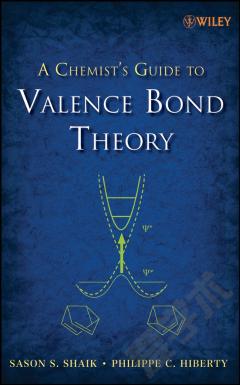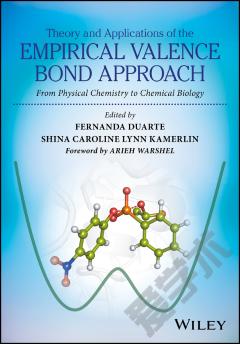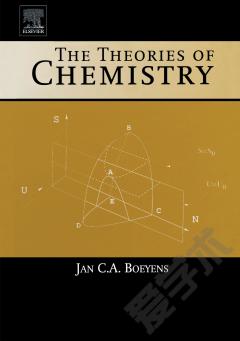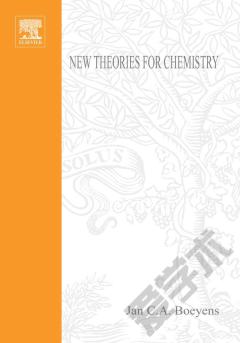A Chemist's Guide to Valence Bond Theory
Preface. Chapter 1. A Brief Story of Valence Bond Theory, Its Rivalry With Molecular Orbital Theory, Its Demise, And Resurgence. 1.1. Roots of VB Theory. 1.2. Origins of MO Theory and the Roots of VB-MO Rivalry. 1.3. One Theory is Up the Other is Down. 1.4. Mythical Failures of VB Theory: More Ground is Gained by MO Theory. 1.5. Are the Failures of VB Theory Real? 1.6. VB is a Legitimate Theory Alongside Molecular Orbital Theory. 1.7. Modern VB Theory: Valence Bond Theory is Coming of Age. Chapter 2. A Brief Tour Through Some Valence Bond Outputs and Terminology. 2.1. Valence Bond Output for the H 2 Molecule. 2.2. Valence Bond Mixing Diagrams. 2.3. Valence Bond Output for the HF Molecule. Chapter 3. Basic Valence Bond Theory. 3.1. Writing and Representing Valence Bond Wave. 3.2 Overlaps between Determinants. 3.3 Valence Bond Formalism Using the Exact Hamiltonian. 3.4 Valence Bond Formalism using an Effective Hamiltonian. 3.5 Some Simple Formulas for Elementary Interactions. 3.6 Structural Coefficients and Weights of Valence Bond Wave Function. 3.7 Bridges Between Molecular Orbital and Valence Bond Theories. Chapter 4. Mapping Molecular Orbitals-Configuration Interaction to Valence Bond Wave Functions. 4.1. Generating a Set of Valence Bond structures. 4.2. Mapping a Molecular Orbital-Configuration Interaction. 4.3. Using Half-Determinants to Calculate Overlaps between Valence Bond Structures. 5. Are the "Failures" of Valence Bond Theory Real? 5.1. Introduction. 5.2. The Triplet Ground State of Dioxygen. 5.3. Aromaticity-Antiaromaticity in Ionic Rings CnHn+/- 5.4. Aromaticity/Antiaromaticity in Neutral Rings. 5.5. The Valence Ionization Spectrum of CH4 5.6. The Valence Ionization Spectrum of H2O and the "Rabbit-Ear" Lone Pairs. 5.7. A Summary. 6. Valence Bond Diagrams for Chemical Reactivity. 6.1. Introduction. 6.2. Two Archetypal Valence Bond Diagrams. 6.3. The Valence Bond State Correlation Diagram Model and Its General Outlook on Reactivity. 6.4. Construction of Valance Bond State Correlation Diagram Model and Its General Outlook on Reactivity. 6.4. Construction of Valence Bond State Correlation Diagrams for Elementary Processes. 6.5. Barrier Expressions Based on the Valence Bond State Correlation Diagram Model. 6.6. Making Qualitative Reactivity Predictions with the Valence Bond State Correlation Diagram. 6.7. Valence Bond Configuration Mixing Diagrams: General Features. 6.8. Valence Bond Configuration Mixing Diagram with Ionic Intermediate Curves. 6.9. Valence Bond Configuration Mixing Diagram with Intermediates Nascent from "Foreign States". 6.10. Valence Bond State Correlation Diagram: A General Model for Electronic Delocalization in Clusters. 6.11. Valence Bond State Correlation Diagram: Application to Photochemical Reactivity. 6.12. A Summary. 7. Using Valence Bond Theory to Compute and Conceptualize Excited States. 7.1. Excited States of a Single Bond. 7.2. Excited States of Molecules with Conjugated Bonds. 7.3. A Summary. 8. Spin Hamiltonian Valence bond Theory and its Applications to Organic Radicals, Diradicals, and Polyradicals. 8.1. A Topological Semiempirical Hamiltonian. 8.2. Applications. 8.3. A Summary. 9. Currently Available AB Initio Valence Bond Computational Methods and their Principles. 9.1. Introduction. 9.2. Valence Bond Methods Based on Semilocalized Orbitals. 9.3. Valence Bond Methods Based on Localized Orbitals. 9.4. Methods for Getting Valence Bond Quantities. 9.5. A Valence Bond Methods with Polarizable Continuum Model. 10. Do Your Own Valence Bond Calculations-A Practical Guide. 10.1. Introduction. 10.2. Wave Functions and Energies for the Ground State of F2. 10.3. Valence Bond Calculations of Diabatic States and Resonance Energies. 10.4. Comments on Calculations of VBSCDs and VBCMDs. Epilogue. Glossary. Index.
{{comment.content}}








 京公网安备 11010802027623号
京公网安备 11010802027623号